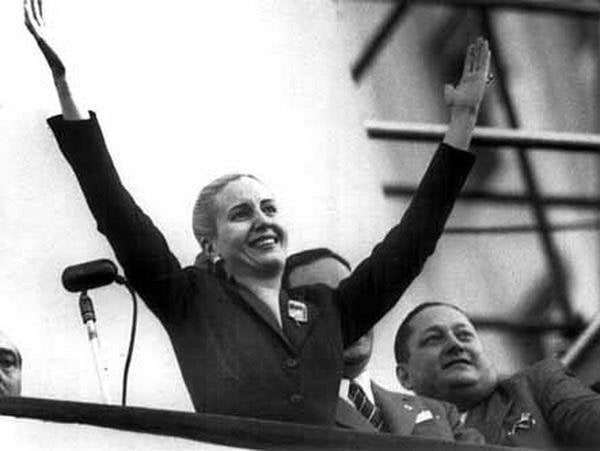IN September 1971, just before his 76th birthday, a man stood on the tarmac at Madrid Airport watching a coffin being unloaded from an Argentinian plane.
The man was Juan Domingo Peron, and the coffin contained what was left of his wife, Eva Peron – who had died almost 20 years earlier.
If you like your love stories with a side of the surreal, read on…
Most people know Evita through the hit Rice–Lloyd Webber musical. It tells the rags-to-riches tale of a poor girl who rose to become Argentina’s most powerful woman. But behind the glitz and glamour lies a story stranger than fiction.
Born Eva Duarte in 1919, her family situation was complicated. Both parents were Spanish Basques, but her father Juan had two families: his official one, and Eva’s. When she was just one year old, he abandoned Eva, her siblings and their mother in a rural village – sending only a modest allowance to keep them afloat.
When he died during Eva’s teenage years, the family plunged into poverty. This is where rumours of Eva turning to prostitution first begin to swirl. Years later, when she visited the UK as Argentina’s First Lady, the British royal family refused to meet her – likely because of her murky past.
At 15, Eva moved to Buenos Aires, possibly chasing a career in acting, or maybe eloping with a musician – depending on who you believe. Either way, she found work in radio, theatre and film, becoming one of Argentina’s rising stars.
In 1944, she met Juan Peron, a powerful politician twice her age. While many saw genuine love between them, cynics claim the match was strategic: Juan brought political muscle, Eva brought working-class adoration. They married in 1945.
This is when ‘Evita’ was born.
Eva wasn’t content to be a decorative First Lady. In the 1946 election, she toured Argentina solo, harnessing her fame to win hearts – and votes. After Juan’s victory, she demanded a formal political role, eventually becoming a government minister.
Two years earlier, when Juan had been arrested by rivals, a myth spread that Eva had knocked on every door in Buenos Aires to rally support. It wasn’t true – but it was believable. Only someone from the slums could walk back into them.
Soon, she was the most famous woman in South America. Her European tour was a mixed bag: she was adored in Spain (Franco was a natural ally), but elsewhere she was dismissed as vulgar and flashy. There were whispers that she came not to spread diplomacy, but to deposit millions in Swiss banks – preparing for the day the Perons might fall from grace.
Back in Argentina, Eva was promoted to Vice President – aged just 30. But her health was rapidly failing. She had cervical cancer, and in 1952, she died.
Her funeral drew such massive crowds that several mourners were crushed to death. Her embalmed body was put on public display. Then, in 1955, when Peron was overthrown, her corpse vanished.
For 16 years, Eva’s fate was a mystery – until her body was discovered in a crypt in Milan, Italy.
By then, Juan Peron was in exile in Madrid. In 1971, Eva was returned to him. He reportedly kept her body in his dining room. Yes – really.
Eva is now back in Buenos Aires, in a fortified tomb equipped with trapdoors, designed to prevent her corpse from being stolen or desecrated again.
Some love stories never die. This one just refuses to stay buried.
Click here to read more News from The Olive Press.








